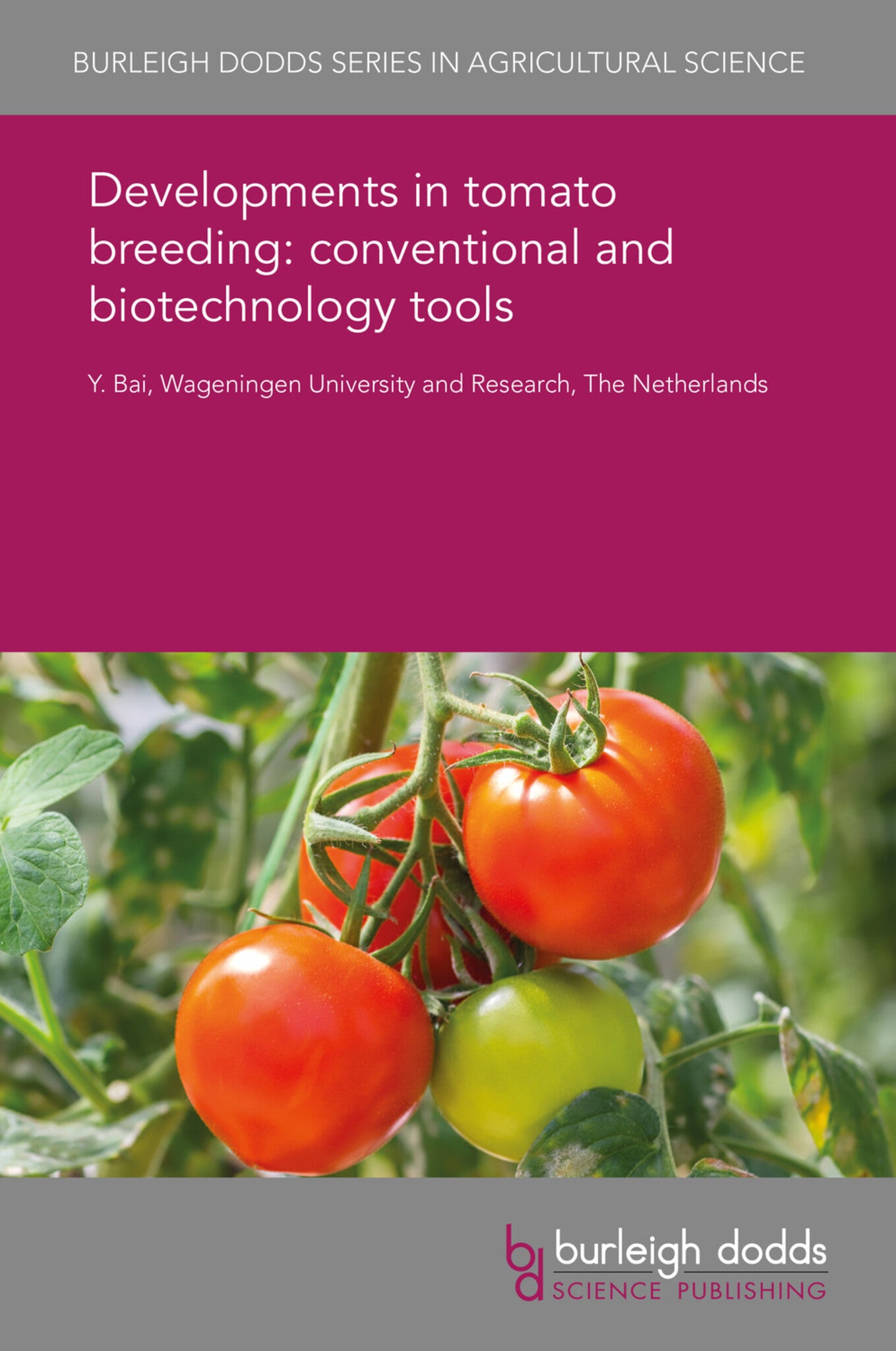We're sorry. An error has occurred
Please cancel or retry.
Developments in tomato breeding: conventional and biotechnology tools
Regular price
£25.00
Sale price
£25.00
Regular price
£25.00
Unit price
/
per
Sale
Sold out
Re-stocking soon
Plant breeding is defined as identifying and selecting desirable traits in plants and combining these into one individual plant. Since 1900, Mendel’s laws of genetics provided the scientific basis ...
Read More

Some error occured while loading the Quick View. Please close the Quick View and try reloading the page.
Couldn't load pickup availability
- Format:
-
28 February 2017

Plant breeding is defined as identifying and selecting desirable traits in plants and combining these into one individual plant. Since 1900, Mendel’s laws of genetics provided the scientific basis for plant breeding. This chapter presents ‘conventional’ breeding technologies that have been applied in tomato breeding. The term ‘conventional’ breeding is defined as the integrated application of classic genetics principles and genomics through visual and/or molecular selection with non-GM (genetic modification) tools. In tomato breeding four conventional methods have played important roles, namely, true breeding, tomato hybrid breeding, introgression breeding and mutagenesis. In the genomics era, the ‘conventional’ tomato breeding cycle was and is being challenged by novel tools of plant breeding resulting from the availability of genomic tools and resources. At the end of the chapter, an outlook on biotechnology tools that are revolutionizing tomato breeding is provided.

Price: £25.00
Publisher: Burleigh Dodds Science Publishing
Imprint: Burleigh Dodds Science Publishing
Series: Burleigh Dodds Series in Agricultural Science
Publication Date:
28 February 2017
ISBN: 9781838792817
Format: eBook
BISACs:
SCIENCE / Life Sciences / Horticulture, Commercial horticulture, TECHNOLOGY & ENGINEERING / Agriculture / Agronomy / Crop Science, TECHNOLOGY & ENGINEERING / Agriculture / Sustainable Agriculture, Botany and plant sciences, Sustainable agriculture, Agronomy and crop production

1 Introduction 2 Tomato domestication and breeding 3 Conventional tools in tomato introgression breeding 4 Mutagenesis and tomato mutant libraries 5 Future trends 6 Where to look for further information 7 Conclusion 8 Acknowledgements 9 References



